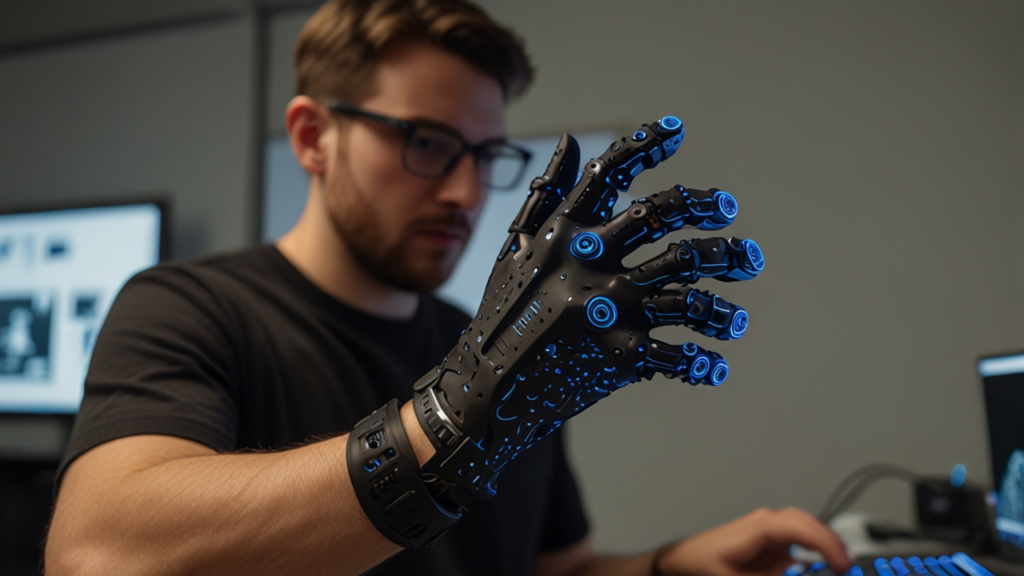Xbox Gaming Evolution 2025
Welcome to our deep dive into the evolution of one of the most iconic brands in the gaming industry. In this article, we explore the advances in hardware, innovative methodologies, and strategies that have shaped the journey of a household name over the past two decades. We invite you to join us as we dissect technical innovations, market trends, and future prospects in a friendly and accessible tone.
Every revolution has its roots, and here we trace the early steps that set the stage for continued success. From its bold debut in the early 2000s to its current position at the forefront of interactive systems, the evolution is as fascinating as it is complex. Our discussion will blend technical details and real-world case studies to offer clarity and insight for enthusiasts and newcomers alike.
This blog leverages thorough research from industry reports, academic studies, and expert opinions. We will delve into in-depth statistics, innovative methodologies, and market-driven strategies, making this a must-read for anyone interested in mobile gadgets and the broader world of technology. For more information on related topics, explore our Mobile & Gadgets category.
Table of Contents
Introduction to Xbox
Brand Vision and Early Strategy (Cutting-Edge Technologies)
The inception of this brand was marked by a daring vision that broke the mold of traditional consoles. Early on, engineers leveraged PC-like hardware and a Windows-based environment to open the doors to greater accessibility for game developers. The original system, powered by a 733 MHz Intel Pentium III processor and featuring a built-in hard drive, allowed for new levels of local data storage and connectivity. This bold move was illustrated further by its integrated Ethernet port which set the stage for an innovative online service that connected gamers globally.
Drawing from a collaborative spirit within the company, the initial Xbox concept emerged from professionals in the DirectX team who dreamt of a device that broke the confines of conventional highly-customized hardware. Key milestones such as the introduction of exclusive titles and the subsequent launch of an online network service underscored the brand’s ambition to lead in technology-driven gaming. Do you recall a moment when technology completely redefined your gaming experience?
For a deeper look at how this brand set the foundation for revolutionary technology in gaming, refer to the detailed study on Wikipedia.
Foundation for Community and Connectivity
The platform was not only about powerful hardware—it fundamentally restructured how gamers interacted with play. The launch of the online network service in 2002 created a new realm of community experiences with multiplayer features, chat systems, and content sharing, which were revolutionary at the time. Early adopters were amazed by the speed and real-time interactivity that this network facilitated, and this connectivity has continued to grow with each new generation.
Despite the initial financial hurdles, which included losses estimated up to $4 billion by 2005, the bold experiment captured hearts and minds. The growing community solidified the device’s presence in homes across North America, Europe, and beyond. When you consider how modern online communities function today, what aspects of those early experiments resonate the most?
This pioneering work is echoed by insights from a Microsoft News documentary that reviews the early stages of this innovative venture.
Evolution and History of Xbox
Transformative Generations in Hardware
Over the years, the system has evolved through multiple generations. The progress from the original model to the second generation introduced a significant leap in hardware capabilities. A prime example was a device that featured a custom triple-core 64-bit PowerPC processor. This evolution also saw an increase in storage capacity up to 500 GB and improvements in multimedia streaming abilities, making it the best-equipped system of its time.
With each new generation, the brand maintained a strategic vision that balanced performance with backward compatibility. As a result, the advancements not only enhanced gaming experiences but also catered to developers by simplifying software development using a Windows-based system combined with DirectX. The evolution narrative stands as a testimony to technological resilience and ingenuity. What new hardware innovation do you think changed the landscape next?
For additional background on hardware evolution, see a comprehensive timeline provided by Record Head.
Expanding Services and Digital Experiences (Smart Devices)
While hardware improvements played a crucial role, the subsequent digital transformation was equally significant. The introduction of an online service transformed community interactions by offering a dedicated online service platform that connects millions of users simultaneously. This innovation extended beyond the mere physical aspects of the product, effectively turning the device into a multi-functional hub for interactive entertainment.
The evolution was a blend of developing robust hardware while simultaneously expanding digital content offerings and online community tools. With subsequent features like streaming multimedia services integrated into the system, the platform became a nexus for both gaming and entertainment. How did the advent of enhanced digital experiences change the way you engaged with technology?
Detailed insights on expanding services can be explored further on Britannica, ensuring you understand the broader context of digital transformation.
How Gaming Console Enhances Xbox
Architectural Advancements in Hardware (Innovative Solutions)
The device’s design leverages PC-like architecture that significantly simplifies game development. Early designs were innovative in integrating industry-standard computer components, such as Intel processors and robust memory solutions. Modern iterations sport custom AMD processors that offer powerful graphics and advanced computational capabilities, pushing boundaries in visual fidelity and gameplay smoothness.
The inclusive approach by integrating both custom components and off-the-shelf parts fosters a developmental ecosystem that benefits developers and gamers alike. The design has always focused on flexibility, enabling developers to create more sophisticated games with enhanced interactive features. This evolution of hardware architecture directly contributes to improved performance, a more seamless user interface, and the capacity for future upgrades.
Are you impressed by how advancements in hardware influence the gaming experiences you enjoy? The innovation is evident in each step of the system’s growth.
Enhancing Connectivity and Multiplayer Experience
Connectivity features have been a cornerstone, starting with the early inclusion of an Ethernet port. This strategic addition revolutionized multiplayer gaming by enabling online interactions through a dedicated network system. A streamlined online service allows players to share experiences, challenge each other, and connect with a global community in real time. Regular updates to the networking infrastructure have resulted in improved latency and reliability, paving the way for smooth multiplayer experiences.
The device’s communication tools continue to evolve, integrating advanced voice chat and social networking features into the online system. These enhancements make it easier for gamers not only to compete but also to form lasting relationships. What do you value most about connecting with a global community through interactive systems?
For specifics on connectivity features, you can explore detailed research from the Xbox Research page.
Interactive Entertainment Systems and Their Applications
Integration of Motion Sensing and Cloud Streaming (Digital Transformation)
This platform innovated how entertainment systems interact by introducing motion sensing through a dedicated sensor input device. The integration of advanced motion sensing technology was designed to facilitate immersive experiences—allowing physical interaction with digital content. Though this feature had mixed commercial success initially, its potential as an alternative control mechanism set a new trend in interactive applications.
The advancement in entertainment systems was later complemented by cloud streaming technologies. By leveraging cloud infrastructure, users can access content without the need for high-end hardware, democratizing access to state-of-the-art gaming experiences. The integration of these features has redefined interactive entertainment and opened new avenues for multimedia usage. How do you think motion sensing and cloud streaming have altered the digital entertainment landscape?
For more perspectives on innovative interactive solutions, check insights on Turbologo.
User Experience and Community Interaction
The online service is a critical example of boosting user experience by offering customizable social features and digital content distribution. Regular updates based on extensive player research ensure that the experience remains fresh and engaging. Such studies have helped shape user interfaces and the overall design of the online platform, resulting in a more intuitive and interconnected community environment.
The system now features a variety of interaction tools such as voice chat, matchmaking, and friend lists, creating an ecosystem where players can celebrate shared victories and learn from each other. These enhancements helped the brand become synonymous with community and connectivity, thriving on constant innovation and user feedback. What improvements in community features have benefited your experience the most?
This transformation underscores the importance of ongoing research and development. To further explore the user-centric approach, you may refer to additional resources available on technology-focused platforms.
Real-World Case Studies of Xbox
Impactful Franchises and Record Sales (Digital Living)
One of the most striking success stories involves a flagship game franchise that has continuously driven hardware sales and user engagement. The seminal title, launched during the early years, quickly cemented the system’s reputation by offering gameplay that captured the imagination of millions. This title not only played a huge role in establishing the brand’s identity but also demonstrated the practical impact of innovative interactive systems.
Record-breaking sales figures, such as the sale of 84 million units during the era of the second-generation system, validate the market’s enthusiasm for advanced technological solutions. These numbers are echoed in regional studies that highlight factors such as strong community support and digital content availability, which played a pivotal role in the widespread acceptance of the device. Have you ever been influenced to try a new release because of a beloved franchise?
For an in-depth analysis of sales data and market influence, explore further details on the Record Head website.
Comparison of Case Studies via Comprehensive Data
A look at multiple case studies reveals how diverse factors—ranging from hardware innovation and online service growth to regional marketing adaptations—contributed to overall market success. For example, regions such as North America and Europe saw significant user adoption and revenue streams driven by extensive digital content and exclusive titles, while other markets faced intense competition and had to adapt to localized consumer preferences. This comprehensive perspective provides insights into the adaptability and resilience of the product across different cultural and economic contexts.
Below is a comparative table summarizing several key case studies. The table aligns on aspects such as the inspiration behind innovation, tangible market impact, and geographic spread:
Comprehensive Comparison of Case Studies
| Example | Inspiration | Impact/Outcome | Region |
|---|---|---|---|
| Flagship Franchise | Engaging Gameplay | Exceeded 84 million units sold | Global |
| Online Service | Connectivity Innovation | Over 20 million users during early years | North America, Europe |
| Motion Sensing | Immersive Interaction | Launched niche interactive experiences | Selective Markets |
| Cloud Integration | On-demand Streaming | Enabled device-agnostic gaming | Global |
| Digital Subscription Service | Content Aggregation | Rapid subscriber growth exceeding 30 million users | North America, Europe, Asia-Pacific |
The data provided underscores that case studies are not just numbers—they reflect real user experiences and market advancements. Have you noticed similar trends in other technology-driven markets?
Digital Platform in Modern Xbox Solutions
Evolving Subscription Models and Content Strategies
Recent innovations have focused on the transformation of digital content delivery. A subscription service model has redefined how gaming experiences are consumed and distributed. This model offers users an extensive library of titles on a monthly subscription basis, merging the benefits of traditional ownership with the flexibility of streaming. The system leverages cloud infrastructure to ensure constant gameplay updates and broad compatibility across devices.
These strategies have enhanced convenience and accessibility—features that traditional models could not offer. Constant upgrades to the digital infrastructure have minimized hardware dependency and widened the scope of interactive content. What features in subscription-based models have enhanced your digital experience the most?
The shift to a digital-first approach is also highlighted by user studies which indicate that convenience, accessibility, and cost-efficiency are the primary drivers of this model’s success.
Streamlining User Interface and Personalization
The evolution of the digital content ecosystem has also seen improvements in the user interface. Personalized dashboards, recommendation engines, and adaptive content have redefined ease-of-use. By actively analyzing user behavior through dedicated research departments, the system continually improves what is delivered to each user, creating an adaptive environment that meets varied consumer demands.
This personalization ensures that users receive a curated experience, enabling them to spend less time searching and more time enjoying entertainment. The integration of intelligent design not only optimizes content discovery but also reinforces brand loyalty by meeting individual preferences. How has a tailored user experience influenced your interaction with digital services?
For more insights into ongoing developments, additional commentary on content strategies can be found through various industry reports available online.
Future Trends: Microsoft Gaming and Beyond
Anticipated Expansion of Cloud and Subscription Services
Looking ahead, predictions suggest a further expansion of cloud-based gaming and subscription services. Experts anticipate the subscriber base to reach and exceed 50 million users by 2030, driven by continuous improvements in streaming technology and network infrastructure. This will likely include cross-platform integration, enabling seamless transitions between different devices.
Future enhancements in artificial intelligence, augmented reality, and virtual reality are poised to further enhance interactive experiences. Emerging studies suggest that these advances will eventually create a completely connected ecosystem where users can quickly switch from one form of media consumption to another. With evolving consumer demands, how do you envision these innovations reshaping your future entertainment options?
For a broader understanding of these trends, further reading on future technological forecasts can be accessed through reliable industry sources.
Global Expansion and Adaptation Strategies
Future strategies highlight the importance of regional adaptation to diverse consumer preferences. Tailored localization, cultural adaptation initiatives, and refined market strategies will ensure that systems can cement their positions in emerging markets such as Asia-Pacific. This approach will not only boost global presence but also support sustainability by focusing on inclusive hardware production and enhanced accessibility measures.
These strategies have been supported by data indicating that regions with tailored solutions have consistently seen stronger adoption rates and higher user satisfaction levels. Stakeholders emphasize that ongoing market research and adaptation are essential for sustained success on a global scale. What regional trends do you observe in technology adoption that may influence the future?
As we look to the future, these research-backed predictions and data points provide a roadmap for innovation and expansion, truly setting the stage for technological advancements over the next decade.
Design Beyond Boundaries
In the realm of creative problem-solving and innovative thinking, a new era of design is emerging that transcends traditional boundaries. Designers are no longer confined to mere aesthetics but are exploring interdisciplinary collaborations that blend art, engineering, and social sciences to create groundbreaking solutions. This approach is characterized by a methodical exploration of user behavior, real-time responsiveness, and the incorporation of unconventional materials to solve everyday challenges.
One innovative strategy involves harnessing the power of design thinking. By iterating rapidly through prototypes and embracing feedback from a diverse audience, creative minds are crafting solutions that are not only practical but also deeply engaging. Experimentation in form and function is encouraged, and this has led to some remarkable breakthroughs that have redefined how products are conceptualized and brought to life.
Interdisciplinary teams now gather to brainstorm and experiment, drawing inspiration from nature, technology, and even historical art movements. The end goal is to produce designs that resonate on a human level and that can adapt to a rapidly changing environment. This collaboration across fields fosters a culture where risk is embraced, and failure is seen as a stepping stone towards success. What inspires your creative process when faced with complex challenges?
This shift towards expansive creativity invites all involved to think outside the confines of conventional problem-solving. In doing so, teams are learning to appreciate the nuances of human experience and the subtle ways design can influence behavior and engagement. As the boundaries continue to blur between disciplines, a future rich with innovative solutions is on the horizon, promising to revolutionize the way we interact with our surroundings. Embracing this forward-thinking mindset is not just about designing better products—it is about fostering a culture that celebrates every idea, no matter how unconventional, as part of a larger tapestry of progress.
FAQ
What defines the brand’s early strategy?
The early strategy was defined by a commitment to leverage PC-like architecture, integrating robust hardware components and enabling online connectivity. This approach helped establish a community-centric platform that focused on both gaming and digital interactions.
How did the system revolutionize connectivity?
The system revolutionized connectivity by introducing an Ethernet port that enabled users to join an online network. This allowed for multiplayer gaming, social interaction, and seamless digital content distribution.
What drives the evolution of hardware over generations?
Hardware evolution is driven by the integration of advanced processors, increased storage, and innovative components that optimize performance. Regular updates have ensured that each generation suits both gamers and developers, pushing the boundaries of interactive experiences.
How are digital content strategies improving the user experience?
Digital content strategies, including subscription models and personalized interfaces, are enhancing user experience by offering a vast library of content that adapts to individual preferences. Continuous updates and cloud services ensure seamless and engaging interactions.
What future trends are expected to shape the industry?
Future trends include the expansion of cloud-based services, integration of artificial intelligence, and cross-platform interoperability. Additionally, market-specific adaptations and sustainable practices will play a key role in shaping the industry’s evolution.
Conclusion
The journey examined here illustrates a fascinating evolution driven by technological prowess, continuous innovation, and a deep commitment to user connectivity. This narrative is a testament to how forward-thinking strategies and relentless passion can transform a platform into an industry benchmark.
What are your thoughts on the evolution of interactive systems? Do you believe these technological advancements have truly redefined the landscape of digital interaction? Your feedback is crucial, and we invite you to share your experiences and insights in the comments below. For more information and to continue the conversation, please Contact us directly.
Thank you for taking the time to explore this detailed account with us—stay curious, and keep engaging with innovation!
Discover more from Fabelo.io
Subscribe to get the latest posts sent to your email.



